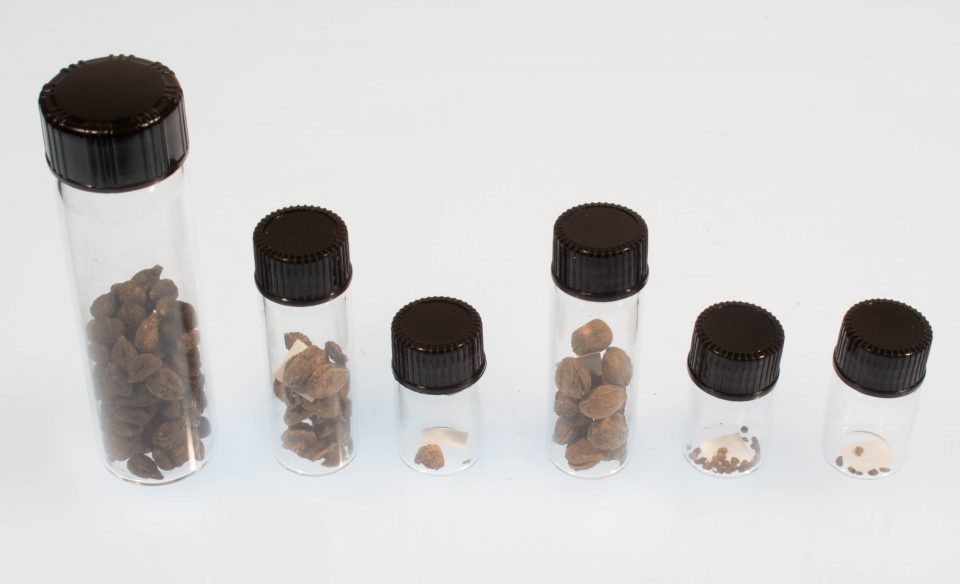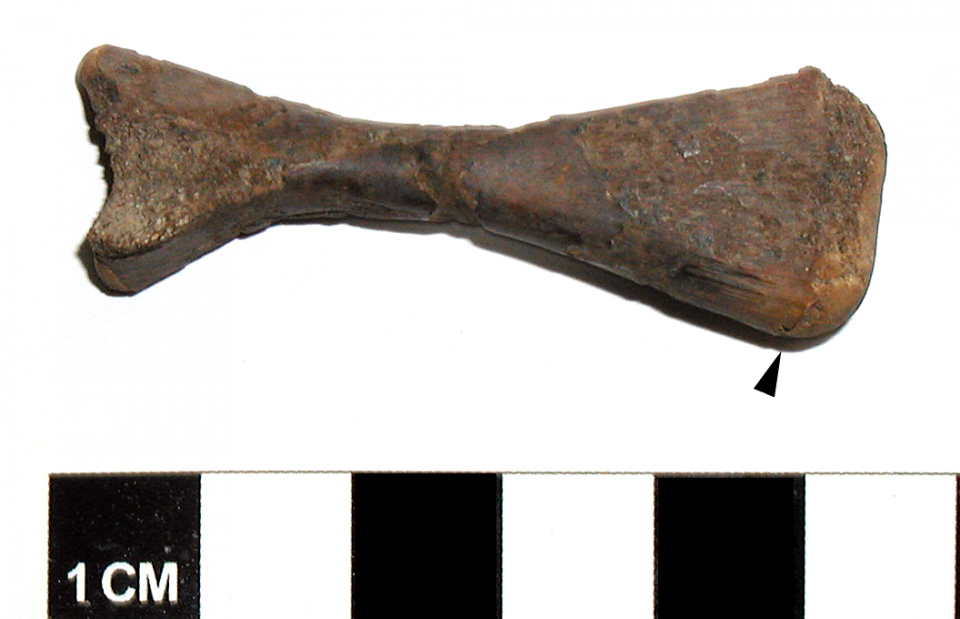Questions to Consider:
- Why do you think we do not have a lot of written evidence of specific events happening at the Meeting House?
- Bones of many different animals were found at the Meeting House. How many of these animals do you think might have been consumed in the same meal? Do you think certain animals may have only been eaten on special occasions? Does your community have certain foods that are only eaten on special occasions?
- Archaeological artifacts such as plates, fruit seeds, and animal bones tell us about some of the activities of the people at the Meeting House. What types of artifacts do you think future archaeologists might find if they looked at community spaces in your neighborhood?
- How does your community come together to celebrate significant events? Is food an important part of these celebrations?
Throughout the 19th and early 20th centuries, Smith Court served as a center for the Black community. In particular, the African Meeting House acted as a popular community space for celebrations and gatherings in addition to its other uses as a church, a forum for activism, a school, and a home. Archaeological evidence shows that community meals played an integral role in community celebrations and gatherings.1.
Community Events
The African Meeting House hosted several community dinners as a part of its effort to bolster the growing Black community in Boston. Although little documented evidence exists regarding specific events at the African Meeting House, several newspaper clippings from the 1840s advertised a soiree, or event, for the “Colored Citizens’ Celebration of First of August,” which commemorated the anniversary of the British West Indies Emancipation. The soiree took place in the Infant School Room of the Meeting House, boasting speakers including William Lloyd Garrison and requiring admission of 50 cents.
While few written records confirm specific events that took place at the Meeting House, archaeological evidence suggests that these events did occur. During the 2007 archaeological dig at the African Meeting House, archaeologists uncovered a significant number of ceramics, mainly creamware and pearlware.2.
Creamware makes up about 19% of the overall ceramic artifacts found at the African Meeting House. Mostly plain, this creamware allowed the community to mismatch in group gatherings.3. This French-influenced dining style involved multiple courses of food being laid out on the table: first, hors d’ouevre (small appetizers), followed by entrees, which usually consisted of large cuts of meat, and finally entremets, or smaller cold meats and savory foods. Waiters brought out these courses one at a time, with the dishes comprising each course spread across the table so that diners took food only from the plates nearest to them. In this way, diners sampled much of the entire meal, but never all of it.4.
The large quantity of ceramics discovered might also be the result of Domingo Williams’s tenure in the African Meeting House.5. As a successful caterer who resided there with his family between 1819 and 1830, he consulted with hosts to help them arrange both private and public social events. He likely also helped arrange functions at the Meeting House, notably serving as President for the celebration of Haiti’s official independence from France at the African School-House.6. Some of the ceramics recovered from the Meeting House likely came from his collection, and his moving out in 1830 could explain the decrease in ceramics at the Meeting House after that point.7.
Food
Although it is not known what people ate during gatherings at the African Meeting House, archaeologists can draw conclusions about what their diet may have looked like based on seeds and animal bones found during the 2007 Meeting House dig. Archaeologists recovered seeds of 35 different types of plants, suggesting a diverse diet of fruits, nuts, and other vegetation. Some of the most commonly recovered plant seeds include raspberries, apples, mustard, tomatoes, and walnuts.8.
Many of the recovered seeds both support and challenge understandings of the cuisine described in cookbooks of the time. Many of the seeds do not come as surprises based on popular recipes: jams, jellies, salad dressings, and pies often used fruit in abundance; many salad dressings included mustard; and breads and pies featured nuts.9. However, the presence of tomato seeds contradict popular understandings of cuisine. Historians believed that tomatoes were unpopular in the Northeast in the 1800s, but the abundance of tomato seeds at the Meeting House suggests otherwise.10.
One cookbook that provides a sense of the time period’s cuisine is The House Servant’s Directory; or, A Monitor for Private Families, etc. by Robert Roberts, a butler to prominent Massachusetts families and a leader in Boston’s Beacon Hill community. As a civil rights activist, Roberts served as one of four Black Bostonians on the provisional committee at the First National Convention of People of Color in 1831. Historians consider Roberts’ book as one of the first books written by an African American and issued by a commercial press. Regarded as very influential, The House Servant’s Directory became the standard for management of large households for decades after its publication.11.
The House Servant’s Directory contained instructions for anything a household might need, from directions on how to polish gates to advice on serving tea or delicious pie recipes. In addition to recipes for jams, jellies, and pastries, the book detailed how to shop for meat, determine the best cuts of meat, and cook these cuts of meat in a variety of dishes. Cuts of cattle, sheep, and pig featured most heavily in the book.12.
The focus on cattle, sheep, and pig in Roberts’ recipes reflect the majority of bones found at the African Meeting House excavation. The cattle and sheep bones came primarily from the body as opposed to the head or feet. The pig bones, on the other hand, came from the entire animal. These remains provide evidence regarding the cuts of meat commonly sold in the markets of the time as well as the cuts of meat preferred by the community. In particular, the sheep bones found represent the meatiest and most desired parts of the animal. The ability to purchase these cuts of meat suggests the community’s economic success and middle class standing.13.
While Roberts’ cookbook and similar cookbooks show a European influence in cuisine, archaeological evidence suggests elements of a distinctly African American cuisine taking root.14. Although turtles likely added diversity to the diet rather than acting as a staple, recipes for turtle soup and other dishes have been recovered.15. This snapping turtle femur has a cut mark on it, shown by the small black arrow in the image, indicating that this turtle was butchered. The presence of this turtle bone may also indicate African American culinary traditions, as turtles first emerged in the culinary scene as a cheap way to feed enslaved African Americans. Cooks incorporated turtle dishes into American cuisine, with chefs even serving turtle at the White House.16.
The variety of dishware, seeds, and animal bones found during the archeological dig provides a window into community life on the north slope of Beacon Hill in the nineteenth century and emphasizes the importance of food in the community gatherings at the African Meeting House.
Contributed by: Kira Torrieri, Northeastern University Graduate
Questions to Consider:
- Why do you think we do not have a lot of written evidence of specific events happening at the Meeting House?
- Bones of many different animals were found at the Meeting House. How many of these animals do you think might have been consumed in the same meal? Do you think certain animals may have only been eaten on special occasions? Does your community have certain foods that are only eaten on special occasions?
- Archaeological artifacts such as plates, fruit seeds, and animal bones tell us about some of the activities of the people at the Meeting House. What types of artifacts do you think future archaeologists might find if they looked at community spaces in your neighborhood?
- How does your community come together to celebrate significant events? Is food an important part of these celebrations?
Comments for Food & Community Gatherings at the African Meeting House:
Footnotes
1. “Commemorations at Smith Court,” Smith Court Stories.
2. “Investigating the Heart of a Community: Archaeological Excavation at the African Meeting House, Boston, Massachusetts,” ed. David B. Landon, Ph.D., Andrew Fiske Memorial Center for Archaeological Research Cultural Resource Management Study No. 22 (University of Massachusetts Boston, 2007), 79-87.
3. Ibid.
4. Beth Ann Bower, "The African Meeting House, Massachusetts: Summary Report of Archaeological Excavation, 1975-1986," Museum of African American History, Boston, MA.
5. “Domingo Williams,” Smith Court Stories.
6. “Celebration of Independence,” Columbian Centinel, Aug. 20 1825.
7. “Investigating the Heart of a Community,” 79-87.
8. Ibid.
9. Robert Roberts, The House Servant's Directory; or, A Monitor for Private Families: Comprising Hints on the Arrangement and Performance of Servants' Work ... and Upwards of 100 Various and Useful Receipts, Chiefly Compiled for the Use of House Servants (Boston: Monroe and Francis, 1827).
10. “Investigating the Heart of a Community,” 117-128.
11. "BOAF Historic Resource Study," Boston African American National Historic Site, (2002), 48-50.
12. Roberts, The House Servant's Directory.
13. “Investigating the Heart of a Community,” 105-116.
14. Diane Spivey, "TransAtlantic Food Migration: The African Culinary Influence on the Cuisine of the Americas," Black Past October 22, 2020. Accessed March 25, 2021. https://www.blackpast.org/global-african-history/trans-atlantic-food-migration-the-african-culinary-influence-on-the-cuisine-of-the-americas/.
15. Mary Randolph, The Virginia Housewife; Or, Methodical Cook (Washington, D.C.: 1824).
16. Shoshi Parks, "Our Taste For Turtle Soup Nearly Wiped Out Terrapins. Then Prohibition Saved Them," National Public Radio, July 18, 2019. https://www.npr.org/sections/thesalt/2019/07/18/742326830/our-taste-for-turtle-soup-nearly-wiped-out-terrapins-then-prohibition-saved-them.








Leave a Comment